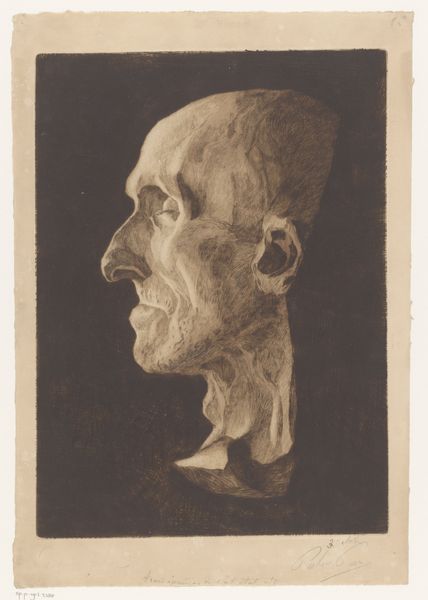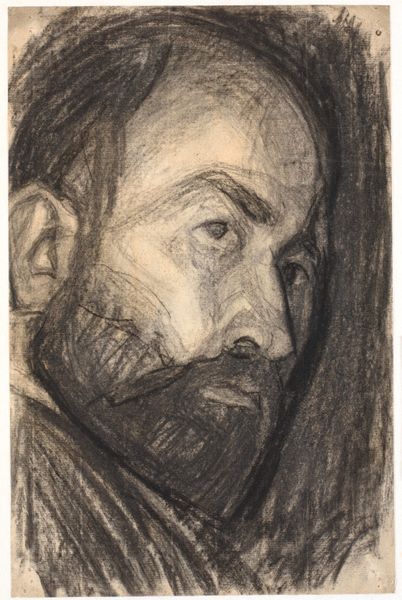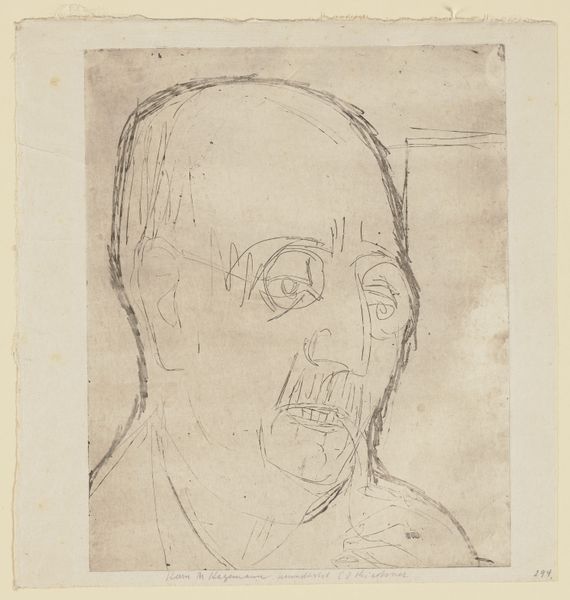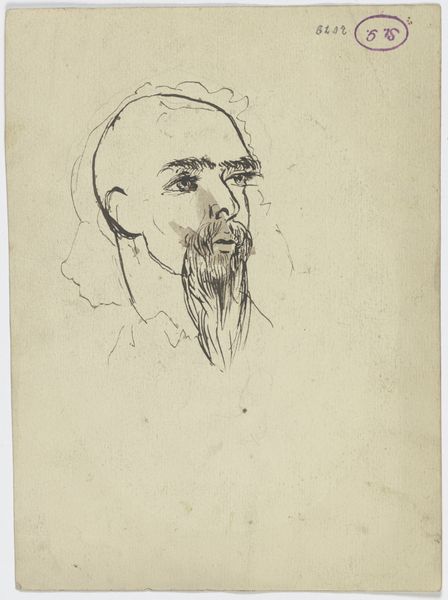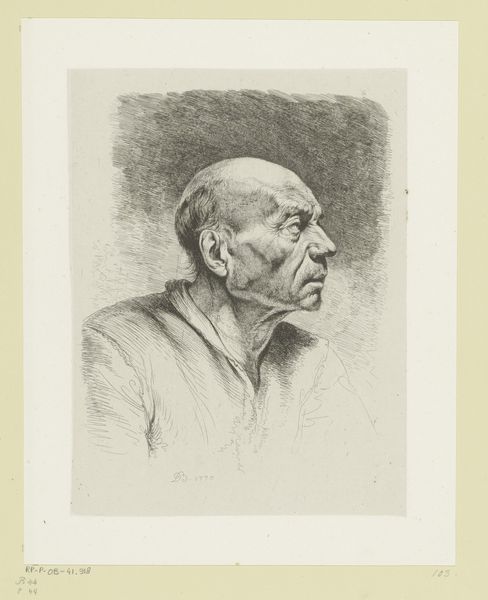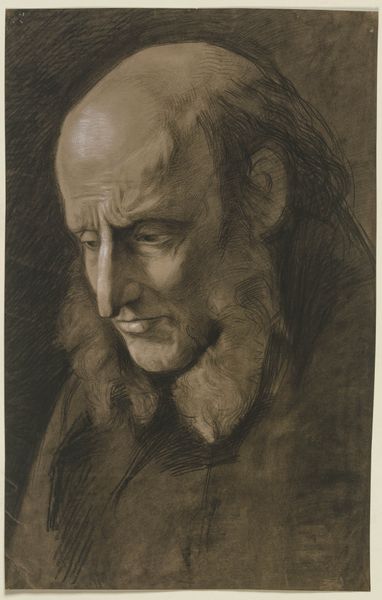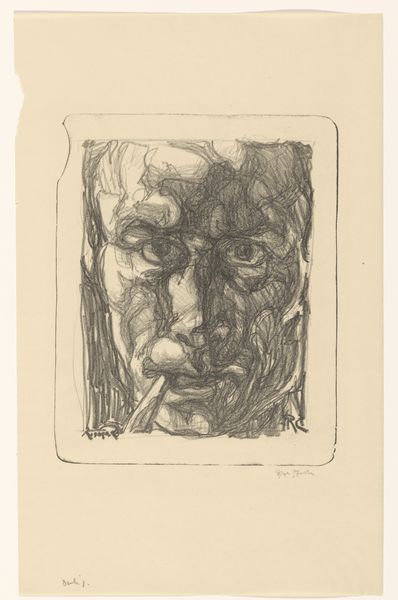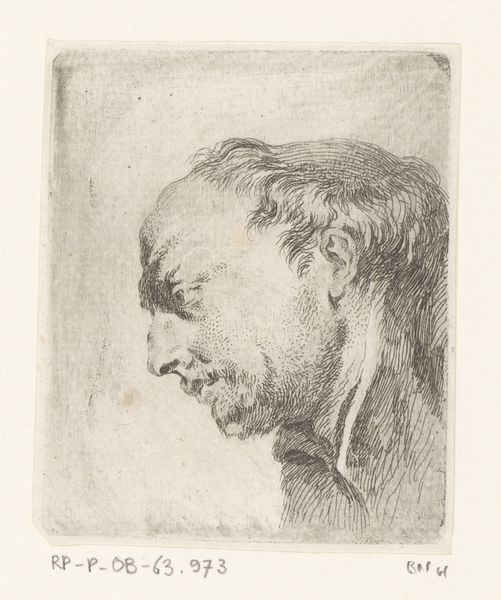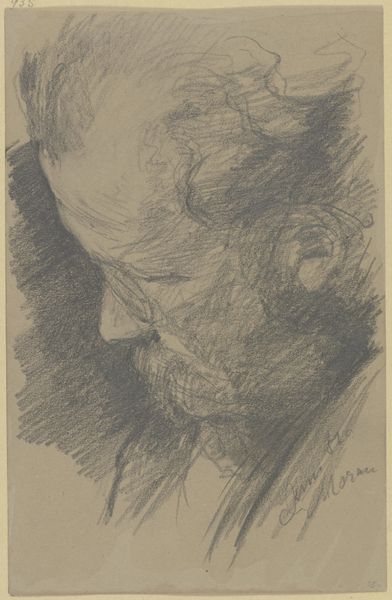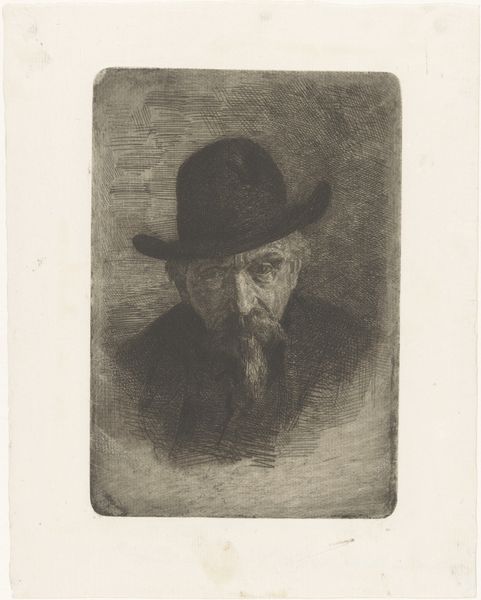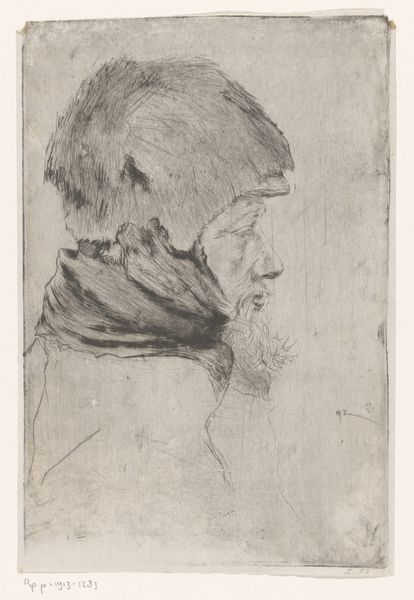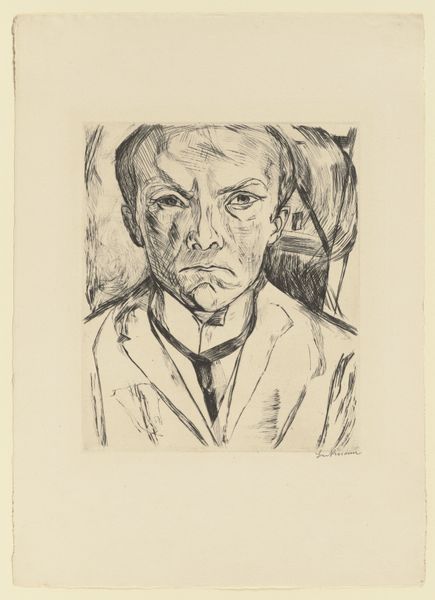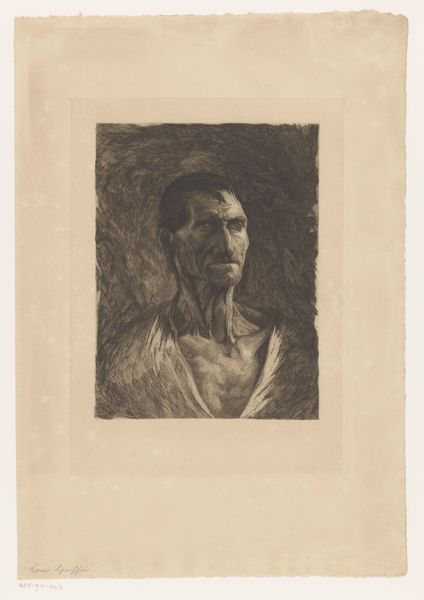
drawing, dry-media, graphite, charcoal
#
portrait
#
drawing
#
charcoal drawing
#
dry-media
#
graphite
#
charcoal
#
post-impressionism
#
realism
Dimensions: height 199 mm, width 139 mm
Copyright: Rijks Museum: Open Domain
Curator: Before us we have "Portret van Paul Joseph Constantin Gabriël," a work executed around 1890 by Jan Veth. Editor: My first impression is one of subdued contemplation. The limited tonal range, a subtle dance of blacks and grays, lends a melancholic air. Is it done with graphite? Curator: The work consists primarily of dry media, including both charcoal and graphite. We see Veth rendering Gabriel's features with remarkable realism. The textural contrast, especially the roughness of the background against the detail in his face, is quite striking. Editor: I’m drawn to the visible texture. The granular quality achieved through the charcoal application is fascinating; you can almost feel the tooth of the paper. Was it typical for artists of this period to leave the traces of their hand so apparent in portraiture? Curator: Indeed. Such visible materiality serves to collapse the hierarchy between artistic labor and the supposed genius of the artwork. Post-Impressionist practices often showcased their methods, bringing the viewer closer to the means of production, emphasizing the labour involved in the artistic process. The realism that emerges, even through a laborious process, adds to its power. Editor: You're right, there is a compelling tension. He's got his face leaning into his left hand. It suggests the sitter, himself an artist, engaged in his own creative process or just world-weary? How much time do you suppose he spent on it? Curator: It would have been quite involved; look at the precise tonal modulations used to articulate the form of his face. He paid close attention to shadowing, rendering the subtle landscape of wrinkles. Each marking feels deliberate, creating a face of profound depth and experience. Editor: I notice he is turned toward the viewer. He really demands the viewer’s attention in a particular and somewhat unsettling manner. Overall, thinking about the material and artistic context here, the medium chosen by Jan Veth really works; you could even say the hand has more presence here. Curator: It presents us with a rare and beautifully wrought moment of human experience, interpreted through a striking economy of means. Editor: Ultimately, this work exemplifies the materialist notion that an artist's ideas are embedded within their methods of working; It has become an act of social commentary through the application and manipulation of medium.
Comments
No comments
Be the first to comment and join the conversation on the ultimate creative platform.
